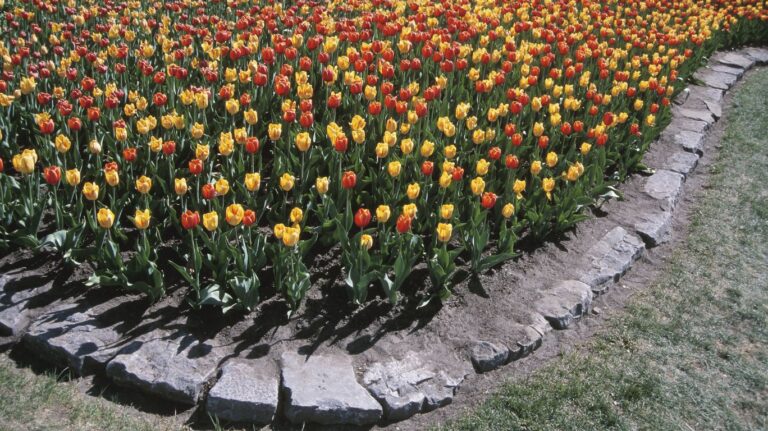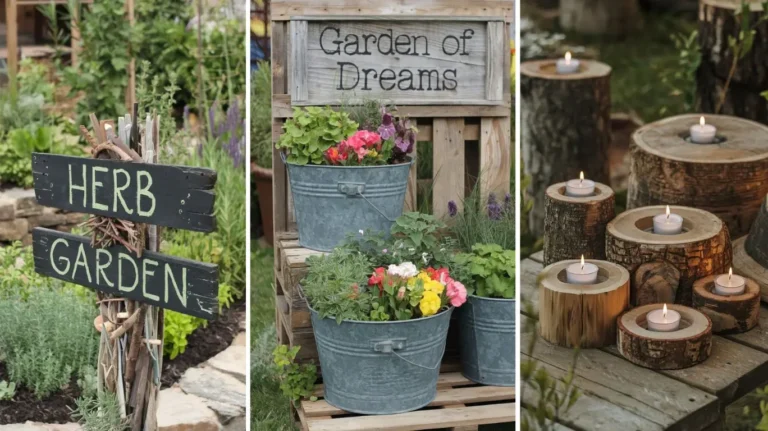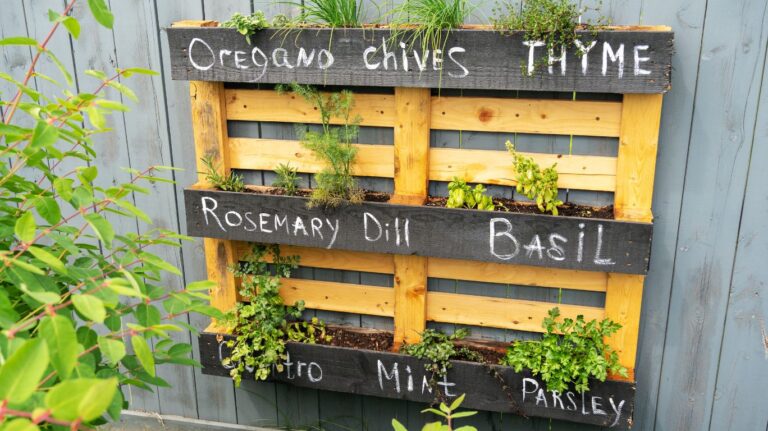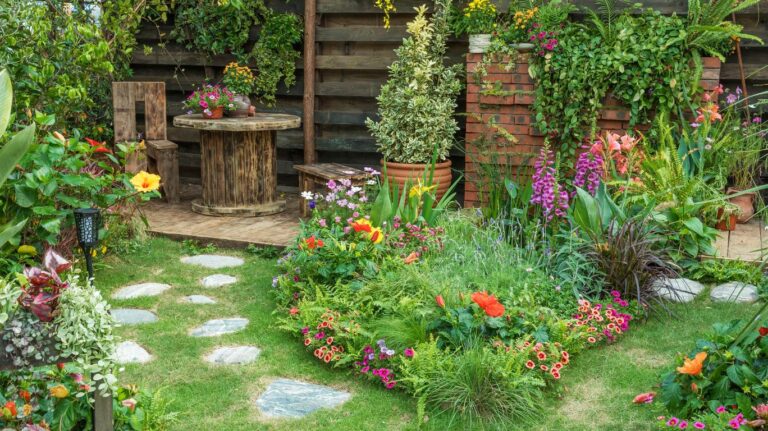22 Garden Planning Layout Ideas
Designing a beautiful and functional garden layout can seem daunting, but with a little planning and creativity, anyone can transform their outdoor space into a lush oasis.
Whether you have a sprawling backyard or a small balcony, there are countless ways to arrange your plants, paths, and features to maximize both aesthetics and practicality. In this comprehensive guide, we’ll explore 22 garden planning layout ideas that will inspire you to create your dream garden.
Pollinator Garden Layout

Creating a pollinator-friendly garden is not only visually stunning but also supports the health of our local ecosystems. To design a pollinator garden, focus on planting a variety of native flowers, shrubs, and trees that bloom at different times throughout the season.
This ensures a continuous food source for bees, butterflies, and hummingbirds. Arrange your plants in drifts or clusters to create a more natural look and provide ample landing space for pollinators.
Kitchen Garden Layout

A kitchen garden, also known as a potager, combines beauty and functionality by incorporating edible plants into an ornamental design.
To create a kitchen garden layout, divide your space into raised beds or sections and plant a variety of herbs, vegetables, and edible flowers. Consider incorporating trellises or obelisks for climbing plants like tomatoes or pole beans. Surround your kitchen garden with a border of flowers or herbs to add visual interest and attract beneficial insects.
Fragrant Garden Layout

Engage all your senses by designing a fragrant garden layout. Choose a variety of fragrant flowers, herbs, and shrubs that bloom at different times throughout the season.
Group plants with similar scents together for maximum impact, such as lavender, rosemary, and sage. Consider incorporating a seating area or path that allows you to fully experience the garden’s aromatic delights.
Herb Garden Layout

Even if you have limited space, you can create a thriving herb garden right outside your door. Arrange your herbs in raised beds, containers, or a traditional in-ground layout.
Group herbs with similar growing requirements together, such as sun-loving plants like rosemary and thyme, or shade-tolerant herbs like parsley and chives. Include a mix of annual and perennial herbs for a continuous harvest.
Cottage Garden Layout

Cottage gardens are known for their informal, charming style that combines a variety of plants in a seemingly haphazard manner.
To create a cottage garden layout, choose a mix of annuals, perennials, herbs, and flowering shrubs. Plant in drifts or clusters to create a lush, romantic look, and incorporate whimsical elements like trellises, arbors, or a birdbath to add to the enchanting atmosphere.
Vertical Garden Layout

When space is limited, consider incorporating vertical elements into your garden layout. Use trellises, obelisks, or even a living wall to grow vining plants like cucumbers, pole beans, or flowering vines.
This not only saves valuable ground space but also adds visual interest and height to your garden. Arrange your vertical elements strategically to provide shade or privacy, and choose plants that will thrive in the specific light conditions.
Raised Bed Garden Layout

Raised beds offer numerous benefits, including improved drainage, easier access, and the ability to control soil quality. When designing a raised bed garden layout, consider the size and shape of your beds to maximize efficiency and visual appeal.
Arrange your beds in a way that allows for easy access and movement between them, and incorporate paths or stepping stones to prevent soil compaction. Choose plants with similar growing requirements to group together in each bed.
Circular Garden Layout

A circular garden layout can create a sense of symmetry and balance in your outdoor space. To design a circular garden, start with a central focal point, such as a birdbath, statue, or ornamental tree.
Arrange your plants in concentric circles around the central feature, with taller plants in the center and shorter plants radiating outward. Use a mix of colors, textures, and bloom times to create visual interest throughout the seasons.
Vegetable Garden Layout

Designing an efficient and productive vegetable garden layout is key to maximizing your harvest. Consider factors like sun exposure, soil quality, and plant compatibility when arranging your crops. Group plants with similar growing requirements together, such as tomatoes and basil, or carrots and radishes.
Use companion planting techniques, such as planting marigolds to deter pests or borage to attract beneficial insects. Incorporate vertical elements like trellises or cages to save space and improve air circulation.
Perennial Garden Layout

Perennial gardens offer the benefit of returning year after year with minimal maintenance. When designing a perennial garden layout, consider the mature size, bloom time, and growing requirements of each plant.
Arrange taller plants in the back or center of the bed, with shorter plants in the front or along the edges. Use a mix of early, mid, and late-season bloomers to ensure continuous color throughout the growing season. Incorporate bulbs like daffodils or tulips for early spring color.
Shade Garden Layout

Designing a beautiful shade garden layout requires choosing plants that thrive in low-light conditions. Incorporate a mix of foliage plants like hostas, ferns, and heucheras, along with shade-tolerant flowering plants like astilbes, bleeding hearts, and columbines.
Arrange your plants in drifts or clusters to create a natural, woodland-inspired look. Consider incorporating a seating area or path to fully enjoy your shady oasis.
Butterfly Garden Layout

Attracting butterflies to your garden not only adds beauty but also supports local ecosystems. When designing a butterfly garden layout, focus on planting a variety of native flowers, shrubs, and trees that provide nectar and host plants for different butterfly species.
Arrange your plants in drifts or clusters to create a natural look and provide ample landing space for butterflies. Include a shallow water source or mud puddle for butterflies to drink from.
Xeriscape Garden Layout

Xeriscape gardening is the practice of creating a low-maintenance, drought-tolerant landscape. When designing a xeriscape garden layout, choose plants that are adapted to your local climate and require minimal water.
Arrange your plants in groups based on their water needs, with the most drought-tolerant plants in the hottest, driest areas. Incorporate mulch to retain soil moisture and prevent weed growth. Consider using permeable surfaces like gravel or decomposed granite for paths and patios to reduce runoff.
Edible Landscape Layout

Incorporating edible plants into your landscape design can create a beautiful and functional outdoor space. When designing an edible landscape layout, choose a mix of ornamental and edible plants that complement each other visually and functionally.
Plant fruit trees, berry bushes, and edible vines along fences or property lines to maximize space. Use edible flowers like nasturtiums or marigolds as borders or accents throughout your garden.
Sensory Garden Layout

A sensory garden is designed to engage all five senses through the use of plants and features. When designing a sensory garden layout, choose plants with interesting textures, colors, scents, and sounds.
Incorporate elements like wind chimes, water features, or gravel paths to add auditory interest. Use plants with fuzzy, prickly, or smooth leaves to create a tactile experience. Include fragrant herbs, flowers, and shrubs to engage the sense of smell.
Formal Garden Layout

Formal gardens are characterized by their symmetry, order, and geometric shapes. When designing a formal garden layout, use straight lines, circles, and rectangles to create a sense of balance and structure.
Incorporate elements like hedges, topiary, or clipped shrubs to create clean edges and defined spaces. Use a limited color palette and repeat plants in symmetrical patterns to reinforce the formal aesthetic.
Naturalistic Garden Layout

In contrast to formal gardens, naturalistic gardens aim to mimic the look and feel of a natural landscape. When designing a naturalistic garden layout, use curved lines, irregular shapes, and a mix of plant heights and textures to create a more organic look.
Incorporate native plants and grasses to provide food and shelter for local wildlife. Use a mix of colors and bloom times to create a sense of abundance and spontaneity throughout the seasons.
Tropical Garden Layout

Tropical gardens are characterized by their lush, vibrant foliage and bold colors. When designing a tropical garden layout, choose plants with large, glossy leaves and showy flowers in shades of red, orange, and pink.
Incorporate elements like bamboo, palms, or banana plants to create a sense of drama and exoticism. Use a mix of textures and heights to create visual interest, and consider adding a water feature or seating area to complete the tropical vibe.
Zen Garden Layout

Zen gardens are designed to promote relaxation and contemplation through the use of simple, minimalist elements. When designing a Zen garden layout, focus on creating a sense of balance and harmony through the use of clean lines, smooth textures, and muted colors.
Incorporate elements like raked gravel, boulders, or carefully pruned shrubs to create a serene and meditative atmosphere. Use a limited color palette and repeat plants in symmetrical patterns to reinforce the Zen aesthetic.
Moonlight Garden Layout

A moonlight garden is designed to be enjoyed in the evening, with plants that bloom at night or have pale flowers that reflect moonlight. When designing a moonlight garden layout, choose plants with white or pale purple flowers, such as moonflowers, angel’s trumpets, or white nicotiana.
Incorporate elements like a seating area or path to allow you to fully experience the garden’s nocturnal beauty. Consider adding a water feature or lighting to create a magical atmosphere.
Cutting Garden Layout

A cutting garden is designed to provide a continuous supply of flowers for bouquets and arrangements. When designing a cutting garden layout, choose a mix of annual and perennial flowers with different bloom times and stem lengths.
Arrange your plants in rows or blocks to make cutting and harvesting easier. Consider incorporating a path or stepping stones to prevent soil compaction and make moving through the garden more comfortable.
Deer-Resistant Garden Layout

If you live in an area with a high deer population, designing a deer-resistant garden layout is essential to protect your plants. Choose plants with strong scents, fuzzy or prickly leaves, or toxic properties that deer tend to avoid.
Arrange your plants in dense groups or use physical barriers like fences or netting to deter deer from entering your garden. Consider incorporating deer-resistant shrubs or trees as a living barrier along property lines or around vulnerable plants.
Edible Flower Garden Layout

Edible flowers can add a beautiful and flavorful touch to salads, desserts, and beverages. When designing an edible flower garden layout, choose a variety of flowers that are safe for consumption, such as nasturtiums, pansies, or marigolds.
Arrange your plants in raised beds or containers for easy access and to prevent soil contamination. Consider incorporating a mix of edible flowers and herbs to create a functional and visually appealing design.
- 29 Small Half Bathroom Ideas - January 8, 2025
- 29 Guest Bathroom Ideas - January 6, 2025
- 29 Whimsical Room Decor Ideas - January 5, 2025







